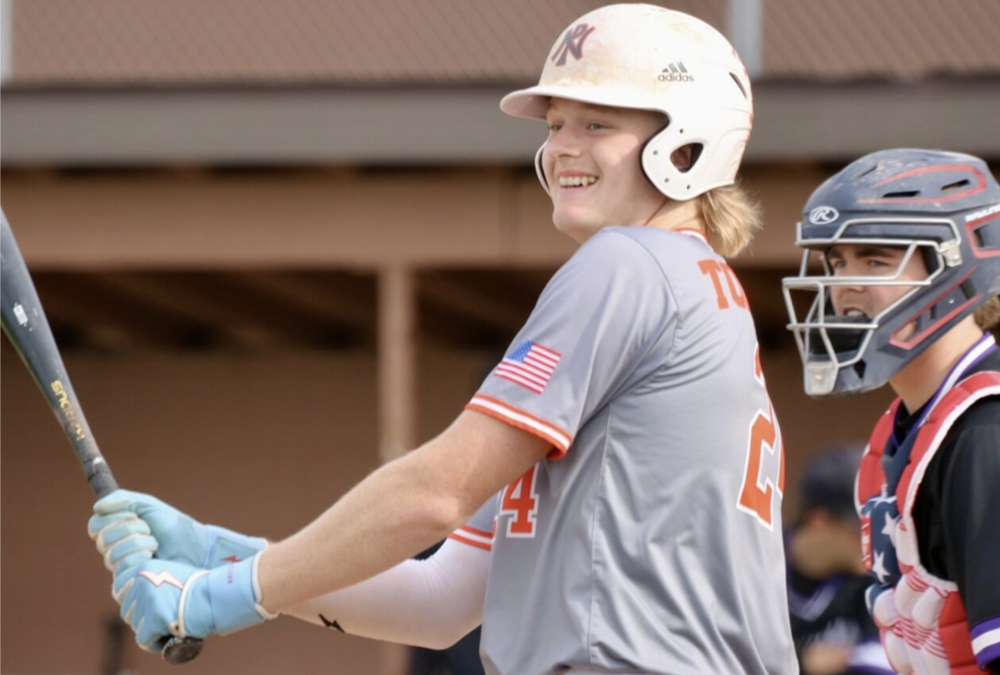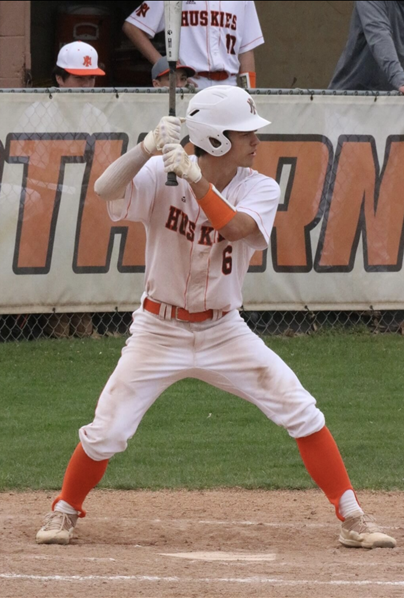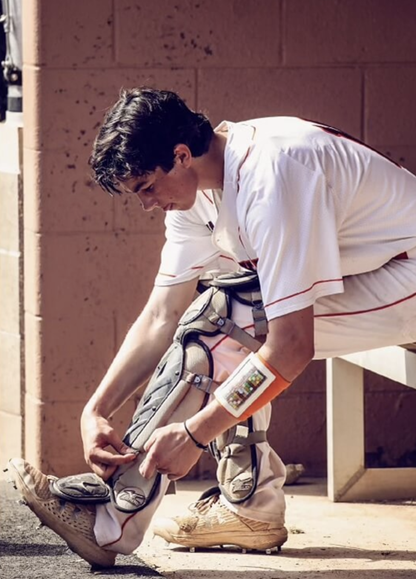
Casting Lines for Future Tournaments
August 12, 2016
By Jack Roberts
MHSAA Executive Director
The MHSAA is best known to the public for the tournaments it conducts to conclude the fall, winter and spring seasons each school year.
These tournaments, the first and largest program of the MHSAA, have survived the Vietnam War, the Korean conflict and two World Wars. They have survived the technology bubble, the housing collapse, the energy crisis and the Great Depression.
MHSAA tournaments existed at the dawn of aviation and at the time of our nation’s lunar landing. Popes, presidents and governors have changed and changed again and again, and MHSAA tournaments roll on year after year.
But the sense of tradition and permanence and inevitability of MHSAA tournaments doesn’t dissuade us from asking questions about our tournaments, even some of the most basic questions. Here are two.
Question #1
I have long been and will always be an advocate for a Ryder Cup format for the MHSAA Golf Finals, and a team tennis approach to the MHSAA Tennis Finals; but 90 years of tradition is hard to overcome. Might this be a more exciting format? Could it be co-ed? Could it reverse the decline in boys tennis participation, and increase girls golf participation? Wouldn’t it be fun to try?
Periodically, the International Olympic Committee requires each of the designated Olympic sports to defend its status, to state its case why the sport should remain a part of the Olympic program. Then, after a series or votes that retain one sport at a time, the IOC drops the sport that makes the weakest case. It does so to make room for one of the previously unlisted sports that makes the best case for inclusion.
This would appear to keep the existing Olympic sports on their toes, and to keep the Olympic movement fresh and reflective of modern trends in sports.
While I would not enjoy the controversy, I can see the potential for some positive results if the MHSAA were to invoke the same policy for determining the 14 tournaments it will provide for girls and the 14 for boys.
This might cause us to consider more deeply what a high school sport should look like, or at least what an MHSAA tournament sport should stand for.
On the one hand, we might be inclined to drop tournaments for those sports that involve mostly non-faculty coaches and non-school venues, or require cooperative programs to generate enough participants to support a team, or resort almost entirely to non-school funding, or cater to individuals more than teams.
Or perhaps this process would cause policymakers to forget traditional thinking and ask: “In this day and age, should we shake off traditional notions of sport and consider more where modern kids are coming from?” That might mean fewer team sports and more individual sports, more “extreme” sports like snowboarding and skateboarding, and more lifetime sports, meaning not just golf and tennis and running sports, but also fishing and even shooting sports.
Currently, MHSAA policy states that the MHSAA will consider sponsorship of a tournament series for any sport which 64 member schools conduct on an interscholastic basis as a result of action by the governing boards of those schools.
Should the only question be how many schools sponsor a sport, or must an activity also have certain qualities and/or avoid certain “defects?” What should an MHSAA tournament sport look like and stand for?
Question #2
Bristling from criticism that his association is a money-grabbing exploiter of children, my counterpart in another state said, “If we were running our programs just to make money, we would do very many things very differently.” I knew exactly what he meant.
Because we care about the health and welfare of students, because we mean what we say that the athletic program needs to maximize the ways it enhances the school experience while minimizing academic conflicts, and because we try to model our claim that no sport is a minor sport when it comes to its potential to teach young people life lessons, we operate our programs in ways that make promoters, marketers and business entrepreneurs laugh, cry or cringe.
If money were the only object, we would seed and select sites to assure the teams that attracted the most spectators had the best chance to advance in our tournaments, regardless of the travel for any team or its fan base. If money were the only object, we would never schedule two tournaments to overlap and compete for public attention, much less tolerate three or four overlapping events. If money were the only object, we would allow signage like NASCAR events and promotions like minor league baseball games.
Those approaches to event sponsorship may not be all wrong; they’re just not all right for us. And we will live with the consequences of our belief system.
During a typical school year, more than 20 percent of the MHSAA’s 2,097 District, Regional and Final tournaments lose money. Not a single site in golf, skiing or tennis makes a single penny. In no sport did every District, Regional and Final site have revenue in excess of direct expenses.
In fact, in only three sports – boys and girls basketball and football – is revenue so much greater than direct expenses overall that it helps to pay for all the other tournaments in which the MHSAA invests.
That’s right: invests. When we present our budget to our board, we talk about the MHSAA’s investment in providing tournament opportunities in all those sports and all those places that cannot sustain the cost of those events on their own. How much is this investment worth to students, schools and society?
These two are core questions that require our focus far in advance of talk about scheduling, site selection, seeding and the myriad matters that too often hijack our time and attention.

Healthy Tomlinson Gives Portage Northern Major Reason to Dream Big
By
Pam Shebest
Special for MHSAA.com
May 14, 2024
PORTAGE – Ty Tomlinson ended last season as a member of the Michigan High School Baseball Coaches Association all-state Dream Team.
 This season began as more of a nightmare for the Portage Northern senior.
This season began as more of a nightmare for the Portage Northern senior.
The lanky shortstop stepped up to the plate for his second at-bat of the Huskies’ opening game and started legging out a double.
“On my way to first base, my first step out of the box, I heard a nice little pop,” Tomlinson said. “Coach (Ben) Neal was screaming at me because he thought I wasn’t hustling. Turns out I was just barely making it to the base.”
That’s because the “pop” was a hamstring injury that sidelined him for nearly half the team's games so far.
“It was rough,” the senior said. “Definitely not how I wanted to start my year. I played three years without getting hurt, and to start the year off like that, especially after all the work we put in this off-season, I was really excited to see it pan out.”
His dad, Ryan Tomlinson, said he knew right away what happened.
“I saw it,” he said. “I knew what happened without talking to him. He’s a very competitive kid.”
Ryan Tomlinson is no stranger to seeing injuries. After 20 years, he recently retired as Western Michigan University’s women’s tennis coach. The first thing he did after Ty’s injury was set his son up with a trainer.
 “Ty would get up at 6 a.m. to work with my trainer, then go to school, then come home to work in the training room,” Ryan said.
“Ty would get up at 6 a.m. to work with my trainer, then go to school, then come home to work in the training room,” Ryan said.
The injury kept the shortstop out of the game, but not out of the action.
“It was hard on a personal level because I’ve grown up as a competitor, but we have so much depth,” Tomlinson said. “I did a lot of the pitch charting, so I was in the game every pitch. As much as I hated being away, we still played great.”
While Tomlinson was sidelined, senior second baseman Ryan Juodawlkis lost his infield partner.
“Me and Ty, we’ve been a duo for years,” Juodawlkis said. “We have great chemistry.
“We’ve played together a long time. We grew up together playing ball since 11-U. We’ve always been on the field together, talking to each other and communicating.”
With Tomlinson out, Brice Welke, one of two sophomores on the team, stepped in at shortstop.
“It’s always harder to adjust to someone else, especially a younger guy,” Juodawlkis said. “It’s the communicating, who’s got the bag for a steal, who’s gonna hold a runner on.”
Prepping to contend
When the schedule comes out at the beginning of the season, the first two dates the Huskies circle are against Mattawan and Portage Central, Tomlinson said.
Central is the crosstown rival with players who are friends outside of school, and Mattawan is the team that ended Northern’s last two seasons in Division I District Finals.
 Northern, ranked No. 15 in Division 1 this spring, was to take a 16-5 record against eighth-ranked Mattawan into a contest scheduled for last Thursday. But the devastation from the EF2 category tornado two days earlier resulted in school being canceled for three days, postponing the game.
Northern, ranked No. 15 in Division 1 this spring, was to take a 16-5 record against eighth-ranked Mattawan into a contest scheduled for last Thursday. But the devastation from the EF2 category tornado two days earlier resulted in school being canceled for three days, postponing the game.
“They know they still get to play, so they’re not too heartbroken about (postponing the game),” second-year head coach Adam Cardona said. “A few have been without power a few days, no one lost their homes, but some of their families have been affected, which I know is weighing on them a bit. Praise the Lord, everybody is safe.
“With everything that’s going on, I think they understand it puts baseball in perspective; there’s bigger things than baseball. I think they’re ready to get back into it and get some of that normalcy back.”
Games against Mattawan and Portage Central, especially, are a good indication of the Huskies' playoff potential.
“Our pitchers need to throw strikes and provide weak contact,” Juodawlkis noted as keys to making it past Districts. “Don’t try to do too much and put the ball in play.”
Senior catcher Braden Welke added, “It’s going to take better situational hitting and a lot better moving runners over (to advance).”
Baseball is in the Welkes’ DNA.
Their father Ben played college ball, and their grandfather Tim Welke, as well as a great uncle, Bill, are former MLB umpires.
 While their grandfather is at most games, he doesn’t try to “umpire” them.
While their grandfather is at most games, he doesn’t try to “umpire” them.
“He more just talks and chats with the umpires. Both give me plenty of stories and pointers,” Braden Welke laughed.
Cardona said Welke is one of the best catchers in Southwest Michigan.
“That dude just loves the game of baseball,” Cardona said. “He’s happy to be out here every single day.
“Behind the dish, he calls everything. He sees the game and knows the game well.”
Welke said he likes being in control.
“I like being able to touch the ball every single play,” he said. “You’re always in the play, always talking. You’re kind of the leader on the field.”
Other seniors on the team are Maxwell Pidgeon, Jack Mick, Antonio Parsayar, Keegan McIntyre and Danny Tafoya. Juniors are Nolan Ratliff, Seth Bartlam, Drew Clyne, Thomas Horein, Mateo Icaza, Izaak Bobbio, Finn Malek, Nolan Wilson, Andrew Wagster, Braden Hembree, Mason Wesaw, David Li and Evan Elkins. Evan McIntyre is the other sophomore.
Diehard fans
While his dad played and coached tennis, Ty Tomlinson knew at an early age it was not for him.
“I grew up playing tennis along with baseball and other sports, trying other sports out,” he said. “Tennis was just not for me.
“I was not the fleetest of foot back in my day, so I couldn’t move around the court all too well,” he laughed. “Dad and I would kind of butt heads a little bit, so I was ‘I’ve got to move on.’”
Ryan Tomlinson is a huge Detroit Tigers fan.
So huge, that his three sons’ names are all derived from former Tigers greats including two Hall of Famers.
Ty is named for Ty Cobb, while his 11-year-old brother is Graydon Gibson (from Kirk Gibson) and his 7-year-old bother is Myles Kaline (Al Kaline).
However, the two younger Tomlinsons are finding their niche in hockey right now.
Ty Tomlinson originally committed to play baseball at University of Michigan next season. But after feeling he found a better fit at George Mason University in Fairfax, Va., the shortstop de-committed and opted to head south to play for the Division I Atlantic 10 Patriots.
“Plus it’s warmer,” he laughed. “I’m not a fan of the cold, and apparently neither is my hamstring.”
 Pam Shebest served as a sportswriter at the Kalamazoo Gazette from 1985-2009 after 11 years part-time with the Gazette while teaching French and English at White Pigeon High School. She can be reached at [email protected] with story ideas for Calhoun, Kalamazoo and Van Buren counties.
Pam Shebest served as a sportswriter at the Kalamazoo Gazette from 1985-2009 after 11 years part-time with the Gazette while teaching French and English at White Pigeon High School. She can be reached at [email protected] with story ideas for Calhoun, Kalamazoo and Van Buren counties.
PHOTOS (Top) Portage Northern’s Ty Tomlinson smiles during an at bat. (2) Ryan Juodawlkis stands in for a pitch. (3) Huskies coach Adam Cardona. (4) Catcher Braden Welke puts on his equipment. (Action photos courtesy of the Portage Northern baseball program; head shot by Pam Shebest.)

